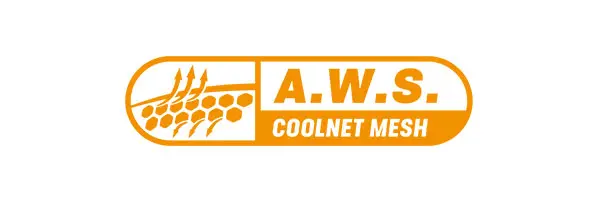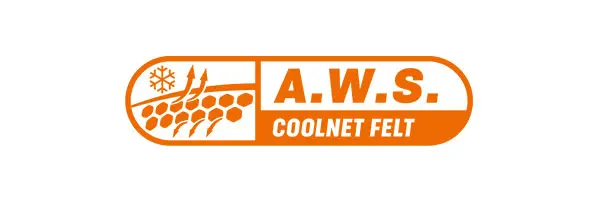









Register as a customer and receive a 20% discount code for your first purchase
Luhta.com – Nordic house of brands for sports, outdoors and more
Tuotteiden ominaisuudet
Sopivaa ulkoiluvaatetta etsiessä on hyvä ottaa huomioon vaatteen tekniset ominaisuudet. Jos vaate tulee aktiiviseen liikunta- tai urheilukäyttöön, kannattaa varmistaa, että se on hengittävä, kuivuu nopeasti ja siirtää hien pois iholta; juoksulenkki loppuu helposti lyhyeen, jos lähtiessä on vetänyt päälleen hengittämättömän vedenpitävän takin. Jos taas lenkkeily tapahtuu koiran kanssa syyssateessa kävellen, voi olla tärkeämpää panostaa vedenpitävyyteen ja lämpimyyteen.
Meille on tärkeää, että tuotteemme sopivat monenlaiseen ulkoiluun. Laaja valikoima erilaisia tuotteita voi kuitenkin saada pään pyörälle, minkä vuoksi kokosimme tähän lyhyen oppaan joistain tuotteissamme yleisesti käytetyistä ominaisuuksista:
Vedenpitävä vai vettähylkivä?
Tuotteen vedenpitävyydestä puhuttaessa pitää ottaa huomioon kaksi eri asiaa: itse kankaan vedenpitävyys sekä saumojen viimeistely.
Kankaiden vedenpitävyys ja vesipilariarvot
Kankaan vedenpitävyys voi perustua joko vedenpitävään kalvoon, joka on laminoitu pintakankaan alapuolelle, tai kankaan päälle tehtyyn pinnoitteeseen (kuten sadetakeissa usein käytetty kumimainen PU-pinnoite).
Kankaan vedenpitävyyttä tutkitaan yleensä vesipilaritestillä. Yksinkertaisimmillaan testi tehdään niin, että pingotetun kankaan päälle asetetaan putki, johon lisätään vettä, kunnes vesi alkaa tihkua kankaan lävitse. Putkeen lisätyn vesipilarin korkeus millimetreinä kertoo, kuinka suurta vedenpainetta kangas kestää. Nykyaikaisten vedenpitävien kalvojen kohdalla vesiputken pitäisi kuitenkin olla jopa 30 metriä korkea, minkä vuoksi testi usein simuloidaan paineistetun veden avulla.
Symbolissa on kaksi lukua allekkain. Ylempi luku kertoo, että päämateriaali kestää 10 000 millimetrin vesipilaria vastaavan paineen, eli kangas on erittäin vedenpitävä. Alempi luku on kankaan hengittävyysarvo, josta voit lukea lisää alempana.
Käytössä vedenpitävyys riippuu sateen voimakkuudesta (ottaen huomioon myös tuulen vaikutuksen) ja esimerkiksi siitä, kuinka paljon kangasta painetaan ja venytetään. Jos siis kannat raskasta reppua selässäsi, istut lumessa tai polvistut märälle maalle, vaatii kuivana pysyminen korkeamman vesipilariarvon, sillä kankaaseen kohdistuu kovempi paine kuin paikallaan seisoessa. Huomaathan, että vedenpitävyys voi myös heikentyä ajan myötä kulumisen ja pesemisen seurauksena.
Käytämme tuotteidemme yhteydessä tällaista merkkiä osoittamaan päämateriaalin vedenpitävyyttä:

Saumojen tiiveys
Vasta kun kaikki vaatteen saumat on teipattu tiiviiksi, voidaan puhua vedenpitävästä tuotteesta. Joskus saumateippauksista puhutaan saumojen hitsaamisena, sillä teippi kiinnitetään sauman päälle käyttäen lämpöä ja painetta. Joissain tuotteissa osat voivat kuitenkin olla myös todella ”hitsattuja” suoraan kiinni toisiinsa käyttämättä lainkaan ompeleita. Täysin saumatiivistetyt tuotteemme tunnistaa tästä merkistä:

Osassa tuotteista vain säänkestävyyden kannalta tärkeimmät saumat (kuten hupun ja hartioiden saumat) on teipattu. Nämä tuotteet pitävät käyttäjänsä useimmissa tilanteissa aivan yhtä kuivana kuin täysin teipatut mallit, mutta eivät kuitenkaan ole täysin vedenpitäviä. Osittain teipatuilla saumoilla varustetut tuotteemme on merkitty omalla merkillään:

On tärkeää muistaa, että jos tuotteessa ei ole teipattuja saumoja, se on aina vain vettä hylkivä, ei vedenpitävä, vaikka kangas pitäisikin vettä. Yleinen esimerkki tästä ovat softshell-tuotteet:

Softshell on kattotermi, jonka alle lukeutuu laaja valikoima joustavista, vedenkestävistä kankaista valmistettuja tuotteita, jotka sopivat monenlaiseen ulkoilukäyttöön. Kylmään vuodenaikaan suunnitelluissa vaatteissa, kuten softshell-lasketteluasuissa, on usein lämmittävä vuori fleeceä tai vastaavaa materiaalia. Kevyemmissä leudon kelin softshelleissä voi olla ohut kangasvuori tai ei vuoria lainkaan.
Vettähylkivät pintakäsittelyt
Useisiin erilaisiin kankaisiin voidaan tehdä vettähylkivä käsittely, joka estää vesipisaroita imeytymästä lankojen väliin. Samantyyppisiä käsittelyjä kutsutaan myös nimityksellä DWR (durable water repellent).
Pintakäsittelyn myötä pienet määrät vettä jäävät pisaroina kankaan pinnalle, mutta käsittely ei estä vettä läpäisemästä kangasta pidemmässä altistuksessa. Jos siis piipahdat nopeasti ulkona tihkusateessa, pysyt mukavan kuivana, mutta pidempiaikaiseen sateessa seisoskeluun pelkkä pintakäsittely ei riitä.
Myös vedenpitävällä kalvolla varustetuissa tuotteissa on useimmiten lisänä vettähylkivä pintakäsittely. Vaikka kalvo estääkin veden pääsyn vaatteen sisälle, niin ilman vettähylkivää käsittelyä pintakangas imisi itsensä täyteen vettä tehden vaatteesta raskaan ja heikentäen sen hengittävyyttä.
Pintakäsittely ei ole ikuinen, vaan se kuluu käytön ja pesun myötä. Jos huomaat, että vesi ei enää jää pisaroiksi vaatteesi pinnalle, voi pintakäsittelyn uusia pesulassa.
Vettähylkivällä pintakäsittelyllä varustetut tuotteemme on merkitty tällä symbolilla:

Hengittävyys
Kankaan hengittävyydellä tarkoitetaan vesihöyryn siirtymistä tekstiilin läpi. Hengittävyysarvo on olennainen tekijä omaan käyttöön sopivan tuotteen valinnassa – juostessa, lasketellessa, vaeltaessa tai muuta hikiliikuntaa harrastaessa on tärkeää huolehtia, että kuuma ja kostea ilma pääsee poistumaan vaatteen sisältä.
Hengittävyyttä voidaan testata useilla menetelmillä, mutta käyttämämme hengittävyysarvot perustuvat seuraavaan perusperiaatteeseen: Kangas asetetaan vesiastian päälle, reunat tiivistetään, ja 24 tunnin kuluttua astia punnitaan, jolloin saadaan selville haihtuneen veden määrä. Tästä saadaan vesihöyryn läpäisykykyä kuvaava MVP-arvo (moisture vapour permeability), joka voi olla esimerkiksi 5 000 grammaa per neliömetri per päivä, eli 5 000 g/m2/24 h.
Tuotteissamme hengittävyys on ilmoitettu vesipilariarvon alapuolella samassa symbolissa:

Mitä korkeampi luku, sitä paremmin kangas hengittää. Yllä esitetyn esimerkin 5 000 g/m2/24 h on hyvä hengittävyysarvo rauhalliseen käyttöön. Korkeampitempoiseen liikuntaan kannattaa valita tuote, jonka hengittävyysarvo on vähintään 10 000.
Hengittävyysarvo määritellään pääasiassa vain vedenpitäville kankaille. Kankaan hengittävyyden lisäksi koko tuotteen hengittävyyteen vaikuttavat myös siinä käytetyt erilaiset tuuletusaukot ja materiaalit. Esimerkiksi juoksu- ja laskettelutakeissa on usein tuuletusaukko selässä tai tuuletusvetoketjut kainaloissa, jolloin ilma pääsee tarvittaessa kiertämään tehokkaammin. Lisätuuletuksella varustetut tuotteemme tunnistat tästä symbolista:

2-, 3- vai 2,5-kerroksinen kuorivaate?
Kuoritakkeja ja -housuja on saatavilla kolmella eri rakenteella. Yhteistä kaikille kolmelle on se, että niihin sisältyy vedenpitävä ja hengittävä kalvo, joka on laminoitu pintakankaan alle. Erot näkyvät kalvon alla, vaatteen sisäpuolella; millainen vuori vaatteessa on, ja kuinka se on kiinnitetty. Jokaisella rakenteella on omat plussansa ja miinuksensa, joten mitään niistä ei voi sanoa yksiselitteisesti parhaaksi, vaan erilaiset vaatteet sopivat erilaisiin käyttötarkoituksiin.
3-kerroksiset kankaat

Kolmikerroskankaat koostuvat kestävästä pintakankaasta, jonka alapuolella on vedenpitävä ja hengittävä kalvo. Kalvon alla puolestaan on vuorikangas, joka on myöskin laminoitu kiinteästi kalvoon kiinni. Vuori suojaa kalvoa hankaukselta, hieltä ja lialta, minkä ansiosta rakenne on kestävä ja kovaan ulkokäyttöön sopiva. Laminointi kuitenkin tekee kankaasta yleisesti ottaen jäykemmän ja hieman raskaamman.
2-kerroksiset kankaat

Kaksikerroksisissa kankaissa on myöskin vedenpitävä kalvo, joka on laminoitu kiinni pintakankaaseen. Kiinteän vuorikankaan sijaan kaksikerroskankaissa on kuitenkin yleensä kevyt ja hengittävä verkkokankainen vuori, joka on vain osittain kiinni ja roikkuu vapaana vaatteen sisällä. Kolmikerroksiseen kankaaseen verrattuna kaksikerrosrakenne on kevyempi ja pakkautuu pienempään tilaan, minkä ansiosta se sopii parhaiten rennompaan vapaa-ajan käyttöön.
2,5-kerroksiset kankaat

2,5-kerroksiset kankaat voi nähdä kaksikerroskankaan jatkokehitelmänä, ja ne ovat grammanviilaajaan paras valinta vedenpitävien ulkoiluvaatteiden saralla. Tavallisen 2-kerroskankaan tavoin niissä on kevyt pintakangas ja sen alle laminoitu vedenpitävä ja hengittävä kalvo. Erillisen verkkovuorin sijaan 2,5-kerrosvaatteissa on kuitenkin kalvon suojana vain hyvin ohut laminaatti tai kuvio, joka on painettu suoraan sen sisäpintaan. 2,5-kerrosvaatteet ovat erittäin kevyitä ja pakkautuvat hyvin pieneen tilaan, mutta niitä täytyy käsitellä varoen ja huoltaa hyvin, jotta ne säilyttävät vedenpitävyytensä ja hengittävyytensä.
Muut teknologiat ja ominaisuudet
Heijastavat elementit

Tällä symbolilla merkatuissa tuotteissa on heijastavia elementtejä, mutta ne eivät ole heijastimia eikä niitä ole tarkoitettu heijastimen korvikkeiksi. Näillä tuotteilla ei ole suojaavaa vaikutusta, joten muista aina käyttää asianmukaista heijastinta pimeällä.
Tuulenpitävä materiaali

Tuulenpitävästä materiaalista valmistetut tuotteet suojaavat viimalta ja estävät kehon ympärille syntyvää eristävää ilmakerrosta häviämästä tuulen mukaan, jolloin pysyt paremmin lämpimänä.
Quick dry -käsittely

Materiaalin Quick Dry -käsittely siirtää hien pois iholta pitäen olon kuivana ja miellyttävänä. Kangas peseytyy alhaisissa lämpötiloissa ja kuivuu nopeasti. Helppohoitoiset Quick Dry -tuotteet sopivat monenlaiseen käyttöön.
Dry – nopeasti kuivuva materiaali

Kangas haihduttaa kosteuden nopeasti, jolloin iho säilyy kuivana ja olo tuntuu miellyttävältä. Tämä on erityisen tärkeää liikkuessa ja urheillessa, niin korkeissa kuin matalissakin lämpötiloissa. Kehon lämmönsäätely toimii parhaiten, kun kosteus pääsee siirtymään ja haihtumaan pois iholta.
Turvallinen lapsille

Tuote on valmistettu lastenvaatteiden turvallisuussäädöksien mukaisesti, ja siinä on irrotettava huppu ilman naruja kaulan alueella, taskut joihin helman kiristysnarut voi piilottaa sekä heijastavia elementtejä. Huomaathan, että ellei toisin ole mainittu, niin heijastavat elementit eivät ole heijastimia, niillä ei ole suojaavaa vaikutusta eikä niitä ole tarkoitettu korvaamaan heijastinta.
Cooltech-materiaali

Cooltech-materiaalilla on erityinen viilentävä vaikutus, joka auttaa pitämään kehon lämpötilan miellyttävänä.
Sustainable cotton

Vastuullisessa puuvillan tuotannossa panostetaan sosiaalisesti kestäviin toimintatapoihin ja noudatetaan tiukkoja ympäristövaatimuksia. Katso tarkemmat tiedot materiaalista tuotesivulta.
Recycled materials

Tuotteessa on käytetty kierrätettyjä materiaaleja, jotka kuormittavat ympäristöämme vähemmän.
Thermostretch

Thermostretch on kevyt, kosteutta siirtävä ja neljään suuntaan joustava materiaali, joka pitää olon kuivana ja lämpimänä. Thermostretch-paneeleja voidaan käyttää takeissa tai housuissa antamaan joustoa, tai se voi toimia päämateriaalina kerrastopaidoille tai -takeille.
Nyppyyntymistä estävä käsittely

Jotkin kangastyypit ovat alttiiita nyppyyntymiselle pesun ja käytön myötä. Nyppyyntyminen on pääasiassa ulkonäöllinen ongelma, mutta erityisen käsittelyn avulla sitä voidaan ehkäistä, jolloin vaate näyttää uudenveroiselta pidempään.
Nelisuuntainen jousto

Neljään suuntaan joustava kangas voi venyä sekä pitkittäis- että poikittaissuunnassa ja palata takaisin alkuperäiseen muotoonsa tarjoten käyttäjälleen täyden vapauden liikkua. Erityisesti urheilu- ja ulkoiluvaatteissa tästä ominaisuudesta on hyötyä. 4-suuntainen jousto saadaan yleensä aikaan sekoittamalla päämateriaaliin joustavaa kuitua, kuten elastaania.
Kaksisuuntainen jousto

Kahteen suuntaan joustavat kankaat voivat venyä joko pitkittäis- tai poikittaissuunnassa ja palata takaisin alkuperäiseen muotoonsa. Jos langoissa ei ole mukana erityisiä joustavia kuituja (kuten elastaania), vaan jousto syntyy puhtaasti lankojen kehruutavasta tai kudontatekniikasta, puhutaan mekaanisesta joustosta.
GORE-TEX®-teknologia

GORE-TEX®-kankaasta valmistetut vaatteet pitävät sateen ja tuulen loitolla tarjoten samalla optimaalisen hengittävyyden – ne ovat pitkäikäisiä tuotteita, jotka suojaavat hyvin ja joita on mukava käyttää.. GORE-TEX®-kankaisiin ja -rakenteisiin lukeutuvat muun muassa eristetyt, eristämättömät, kaksikerroksiset, kolmikerroksiset ja Z-Liner-tuotteet.
GORE-TEX® INFINIUM™ -teknologia

GORE-TEX® INFINIUM™ -tuotteet ovat erittäin hengittäviä ja täysin tuulenpitäviä. Ne on luotu tarjoamaan paras mahdollinen käyttökokemus rankassa liikuntakäytössä silloin, kun täyttä vedenpitävyyttä ei tarvita.
PrimaLoft®-eriste

PrimaLoft®-eriste on synteettinen mikrokuituinen lämpöeristemateriaali. PrimaLoft on erityisen lämmintä, kuivaa, pehmeää ja pakkautuvaa, minkä vuoksi se sopii hyvin kylmän sään vaellus- ja ulkoiluvaatteisiin.
THINSULATE™-eriste

3M Thinsulate™ -eriste pitää lämpimänä kylmimmässäkin säässä. Se on lämmintä mutta kevyttä, tehokasta mutta ohutta, minkä vuoksi se sopii erityisen hyvin esimerkiksi talvihanskoihin, joissa paksumpi vanu aiheuttaisi epämukavuutta.
REPREVE®-kuitu

REPREVE®-kuitu on kierrätettyä polyesterikuitua, joka valmistetaan pääosin kierrätetyistä muovipulloista, jotka muutoin päätyisivät jäteasemille tai roskana luontoon. Kiertotalousajattelun hengessä REPREVE®-kierrätyskuitu auttaa vähentämään veden ja energian kulutusta ja säästämään luonnonvaroja, kun kertaalleen tuotetut materiaalit hyödynnetään uudelleen.
TENCEL™ Lyocell -kuitu

TENCEL™ Lyocell -kuidun raaka-aine on peräisin kestävän kehityksen periaatteiden mukaisesti hoidetuista metsistä, ja sen valmistukseen käytetyt vesi ja kemikaalit kierrätetään ja käytetään uudelleen suljetussa tuotantoprosessissa. Puupohjaiset kuidut ovat biohajoavia, ja niiden ympäristöjalanjälki on merkittävästi pienempi verrattuna perinteisiin vaatekuituihin.
LENZING™ ECOVERO™ -kuitu

LENZING™ ECOVERO™ -kuitu on ympäristövastuullinen vaihtoehto tavalliselle viskoosille. Raaka-aineena käytetty selluloosa saadaan kestävästi kasvatetusta puusta, ja kuitu on saanut EU:n ympäristömerkin osoituksena korkeista ympäristövaatimuksista, jotka se täyttää koko elinkaarensa ajalta.
Footwear – A.W.S. Waterproof

Kengän päällisessä on pintamateriaalin ja vuorin välissä vedenpitävä kalvo, joka pitää huolen siitä, että jalat pysyvät kuivana myös haastavissa sääoloissa.
Footwear – A.W.S. Water-resistant

Kengän vettähylkivä pintamateriaali suojaa jalkoja kosteudelta ja varmistaa mukavan käyttökokemuksen tavallisessa arkikäytössä.
Footwear – A.W.S. Coolnet Mesh -pohjallinen

Tämä irtopohjallinen koostuu hunajakennomaisesta sisuksesta, joka antaa ilman vaihtua, vaimentaa iskuja ja antaa jalalle tukea. Sisuksen päällä on erityisen hengittävä verkkokankainen kerros, minkä ansiosta pohjallinen sopii etenkin lämpimällä säällä tai liikkuessa käytettäväksi.
Footwear – A.W.S. Coolnet Felt -pohjallinen

Tämä irtopohjallinen koostuu hunajakennomaisesta sisuksesta, joka antaa ilman vaihtua, vaimentaa iskuja ja antaa jalalle tukea. Sisuksen päällä on kerros huopaa, joka eristää jalat maasta hohkaavalta kylmyydeltä ja tekee tästä pohjallisesta sopivan kylmälle säälle.
Footwear – A.W.S. Coolnet Pro -pohjallinen

Tämä irtopohjallinen on perusrakenteeltaan ja pintamateriaalien osalta samanlainen kuin Coolnet Mesh -pohjallinen, eli se vaimentaa tehokkaasti iskuja ja antaa jalkojen hengittää. Tässä pohjallisessa on kuitenkin lisänä tuki jalan holvikaarelle, sillä pohjallinen on suunniteltu hybridikengille ulkoilu- ja urheilukäyttöön.
Footwear – A.W.S. Ultra Soft -sisäpohja

Ultra Soft -sisäpohja vähentää jalkaan kohdistuvaa painetta ja vaimentaa iskuja. Materiaalilla on antibakteerisia ja hajuja vähentäviä vaikutuksia. Sopii jokapäiväiseen arkikäyttöön.